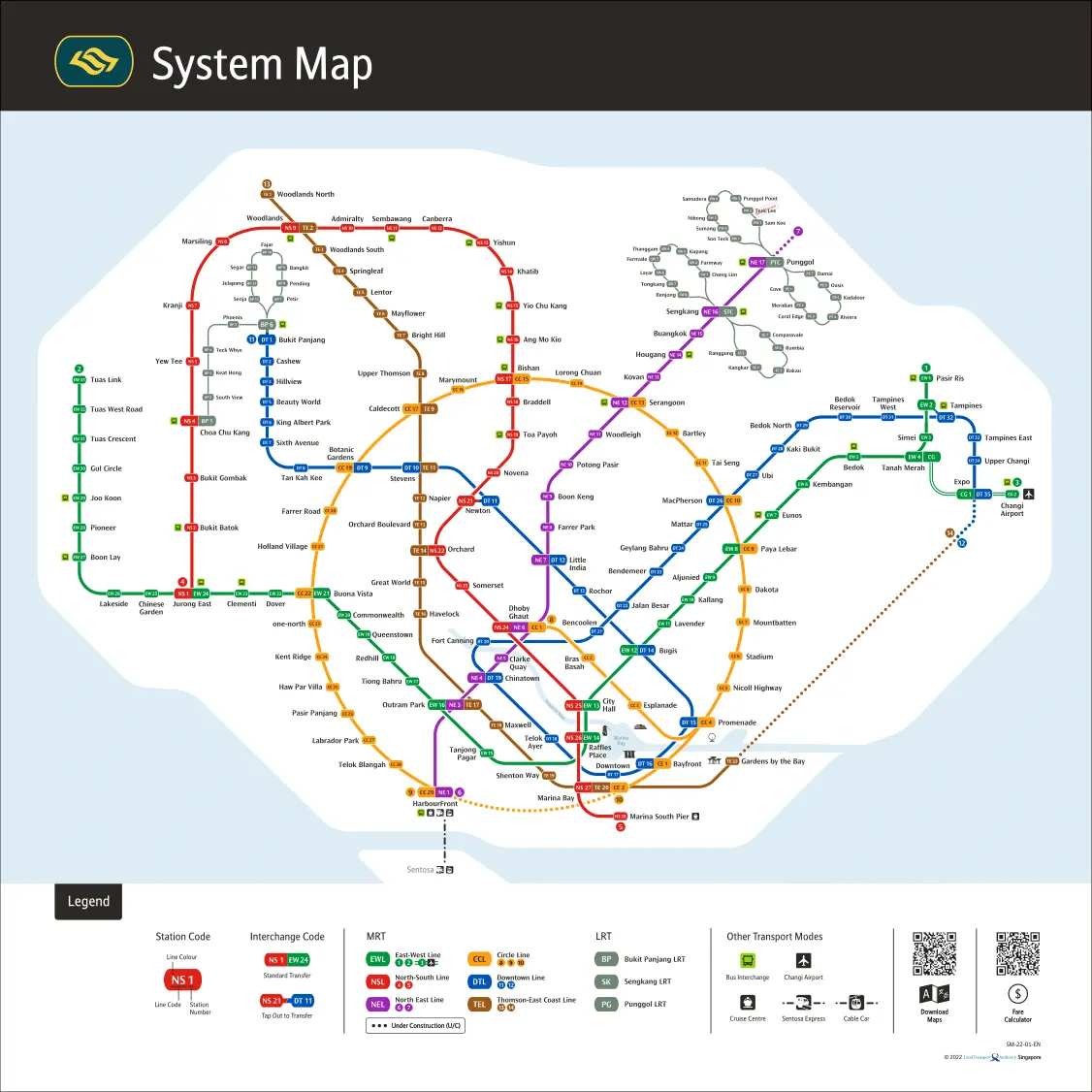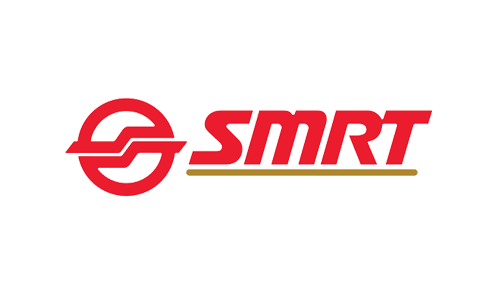Singapore MRT Map: A Comprehensive Guide to Navigating the Network in 2025
Singapore is a bustling metropolis, famed for its modern infrastructure, efficient public services, and impressive architecture. One aspect that truly stands out is its Mass Rapid Transit (MRT) system. The comprehensive, efficient, and constantly evolving MRT network makes getting around the island a breeze. In this guide, we'll delve deep into Singapore's MRT system, focusing on the latest enhancements and developments slated for 2025.
Singapore's MRT: A Peek into Its Past
The MRT system in Singapore, a network of modern, high-speed trains, is not just a transportation system but a testament to Singapore's relentless pursuit of progress. The journey of MRT began back in 1981, with the initiation of a project that aimed to revolutionize Singapore's transportation landscape. Sparked by the then Prime Minister, Lee Kuan Yew, the ground-breaking project demanded a staggering budget of 5 billion SGD.
The first MRT line was introduced in the Toa Payoh and Novena area in 1983, marking the advent of a new era in the city-state's transportation history. Gradually, the MRT network expanded into the core city regions, with the first line, the North-South Line, officially inaugurated on November 7, 1987. Since then, the MRT system has become an essential part of the city's landscape, serving millions of locals and tourists every day.
Understanding the MRT Lines
The Singapore MRT system is a complex network of lines, each represented by a unique color on the Singapore MRT map. These lines crisscross the city-state, connecting various regions and making commuting a breeze.
Thomson-East Coast Line: The Fresh Addition
The Thomson-East Coast Line, represented by the color brown on the Singapore MRT map 2025, is the newest member of the MRT family. Designed as an alternative to the North-South Line, it serves the residents of Woodlands and other nearby areas. The line's construction is still underway, with its completion expected in the near future.
Sengkang LRT and Punggol LRT: The Supporting Pillars
The Sengkang and Punggol Light Rail Transit (LRT) lines, although smaller and not as fast as the MRT lines, play a crucial role in the overall transportation network. Displayed in grey on the Singapore MRT map, these lines connect essential areas and serve as a perfect complement to the main MRT lines.
North-South Line: The Trailblazer
The North-South Line, the pioneer MRT line in Singapore, holds a special place in the city's transportation history. Marked in red on the Singapore MRT map, it now covers 27 stations and has transitioned from semi-automatic to fully-automatic operation.
North East Line: A Feat of Technology
The North East Line, marked in purple on the Singapore MRT map, is the world's first fully automated and driverless MRT line. It boasts of 16 stations, each adorned with distinctive artworks as part of the Art in Transit Program.
East-West Line: The Lengthy Corridor
The East-West Line, Singapore's second oldest MRT line, is also the longest rail line in the city-state. Marked in green on the Singapore MRT map, it covers 35 stations.
Downtown Line: The Underground Marvel
The Downtown Line, displayed in blue on the Singapore MRT map, is the fifth and the longest fully underground MRT line globally. It serves 34 stations and is renowned for its extensive Art in Transit program.
MRT Fares and Ticketing Systems
The fare structure for the MRT depends on the distance traveled and the type of ticket used. There are two fare categories: adult fares and senior citizen/student fares.
For adult fares, prices range from S$0.92 to S$3.10 for a single trip, depending on the distance covered. Passengers can also opt for the EZ-Link card, which offers a 10% discount off the standard adult fare.
For senior citizen/student fares, the prices range from S$0.50 to S$1.55 for a single trip. Senior citizens aged 60 years and above, and primary, secondary, or full-time polytechnic students in Singapore can avail these fares.
There are also other types of tickets available, like the Singapore Tourist Pass and the Monthly Travel Pass, which offer unlimited rides for a specific duration.
EZ Link Card
To ride the MRT, passengers need to purchase an EZ-Link card, easily available at any MRT station. This card can be used on the MRT, buses, and some other public transportation modes in Singapore.
MRT: A Preferred Mode of Transport for Tourists
The MRT is a convenient and efficient mode of transport for tourists to explore Singapore. With its extensive coverage of popular attractions and user-friendly payment system, it is the perfect option for visitors who want to make the most of their time in the city-state.
Conclusion
The Singapore MRT system is a testament to the city's commitment to providing efficient and reliable public transportation. As we look towards 2025, the MRT network is set to become even more comprehensive and user-friendly, making it an indispensable part of life in Singapore. Whether you're a resident or a tourist, the MRT system is your ticket to exploring the city-state with ease and efficiency.

Frequently Asked Questions
What are the different MRT lines in Singapore and their unique features?
Singapore's MRT system comprises several lines, each with its unique features:
- Thomson-East Coast Line: The newest member, represented by the color brown on the MRT map.
- Sengkang and Punggol LRT lines: Smaller lines, displayed in grey, that connect essential areas.
- North-South Line: The pioneer MRT line, marked in red, covers 27 stations.
- North East Line: The world's first fully automated and driverless MRT line, marked in purple.
- East-West Line: The longest rail line, marked in green, covers 35 stations.
- Downtown Line: The longest fully underground MRT line globally, displayed in blue.
What are the fare categories and ticketing systems for Singapore's MRT?
The MRT fare depends on the distance traveled and the type of ticket. There are two fare categories: adult fares ranging from S$0.92 to S$3.10, and senior citizen/student fares ranging from S$0.50 to S$1.55. Other types of tickets include the Singapore Tourist Pass and the Monthly Travel Pass. The EZ-Link card, which offers a 10% discount, can be used on the MRT and other public transportation modes.
Why is the MRT a preferred mode of transport for tourists in Singapore?
The MRT is preferred by tourists due to its extensive coverage of popular attractions and its user-friendly payment system. It offers a convenient and efficient way to explore the city-state.
What are the future plans for Singapore's MRT system?
As we look towards 2025, the MRT network is set to become even more comprehensive and user-friendly, making it an indispensable part of life in Singapore for both residents and tourists.






